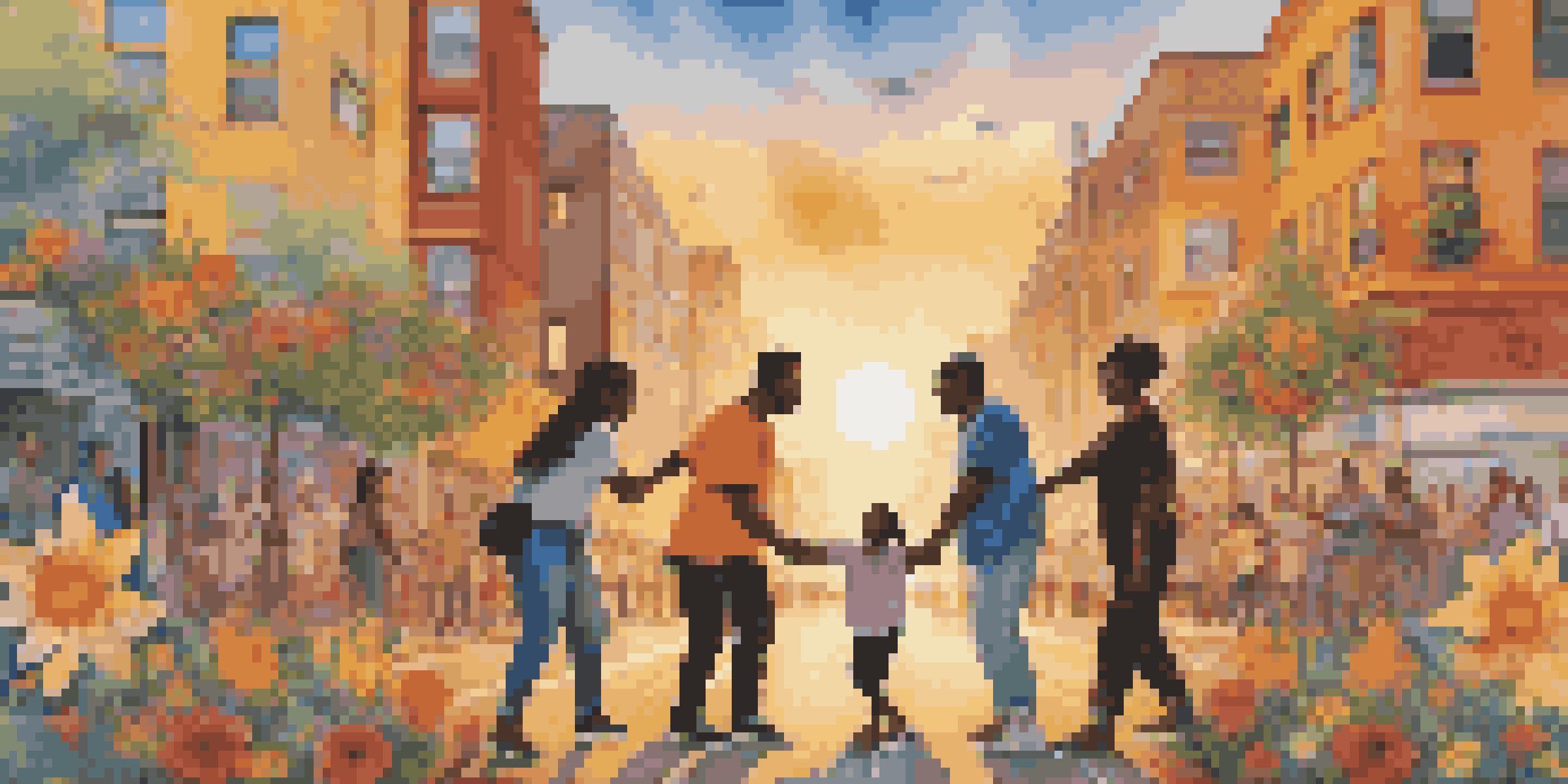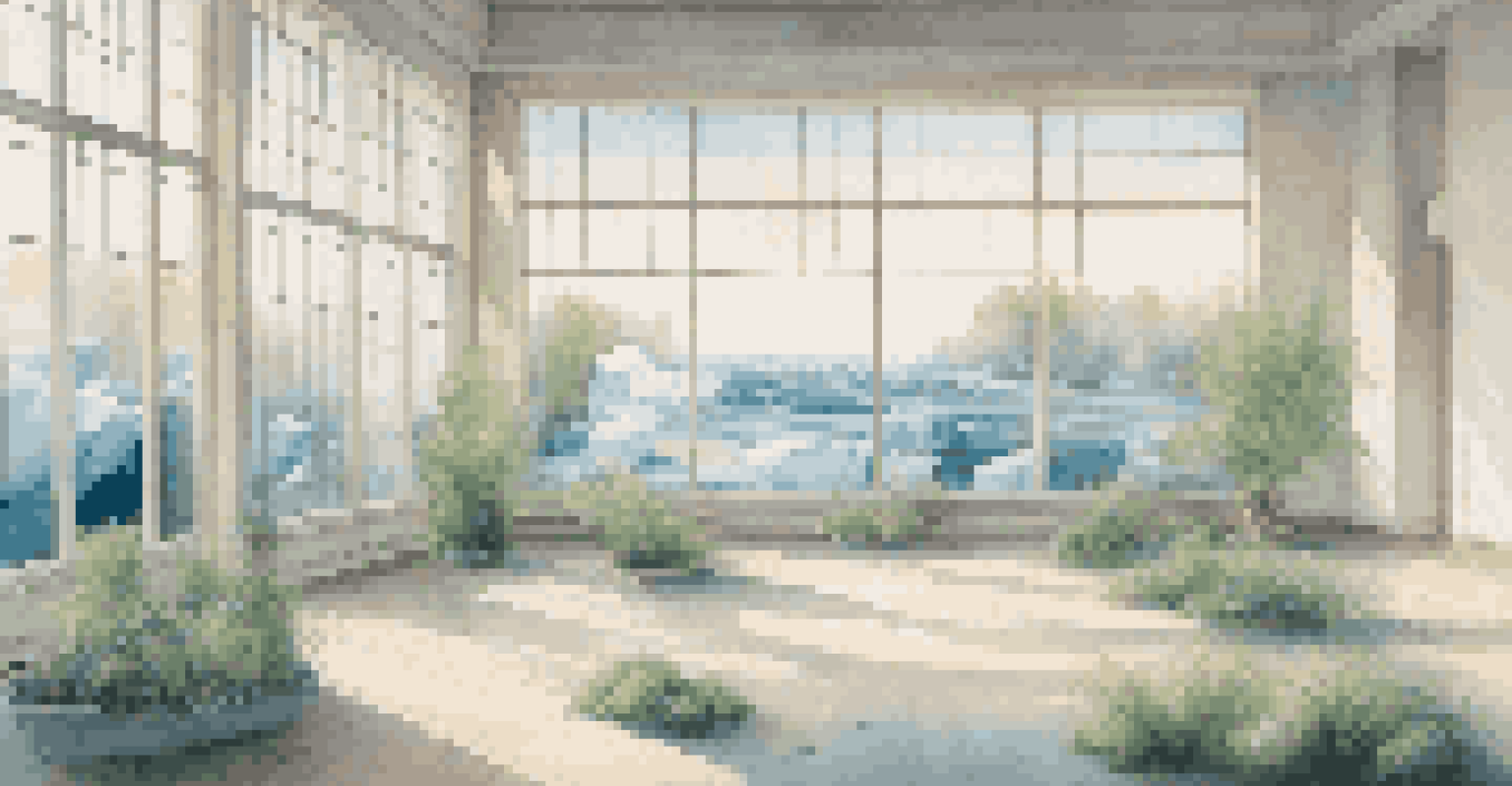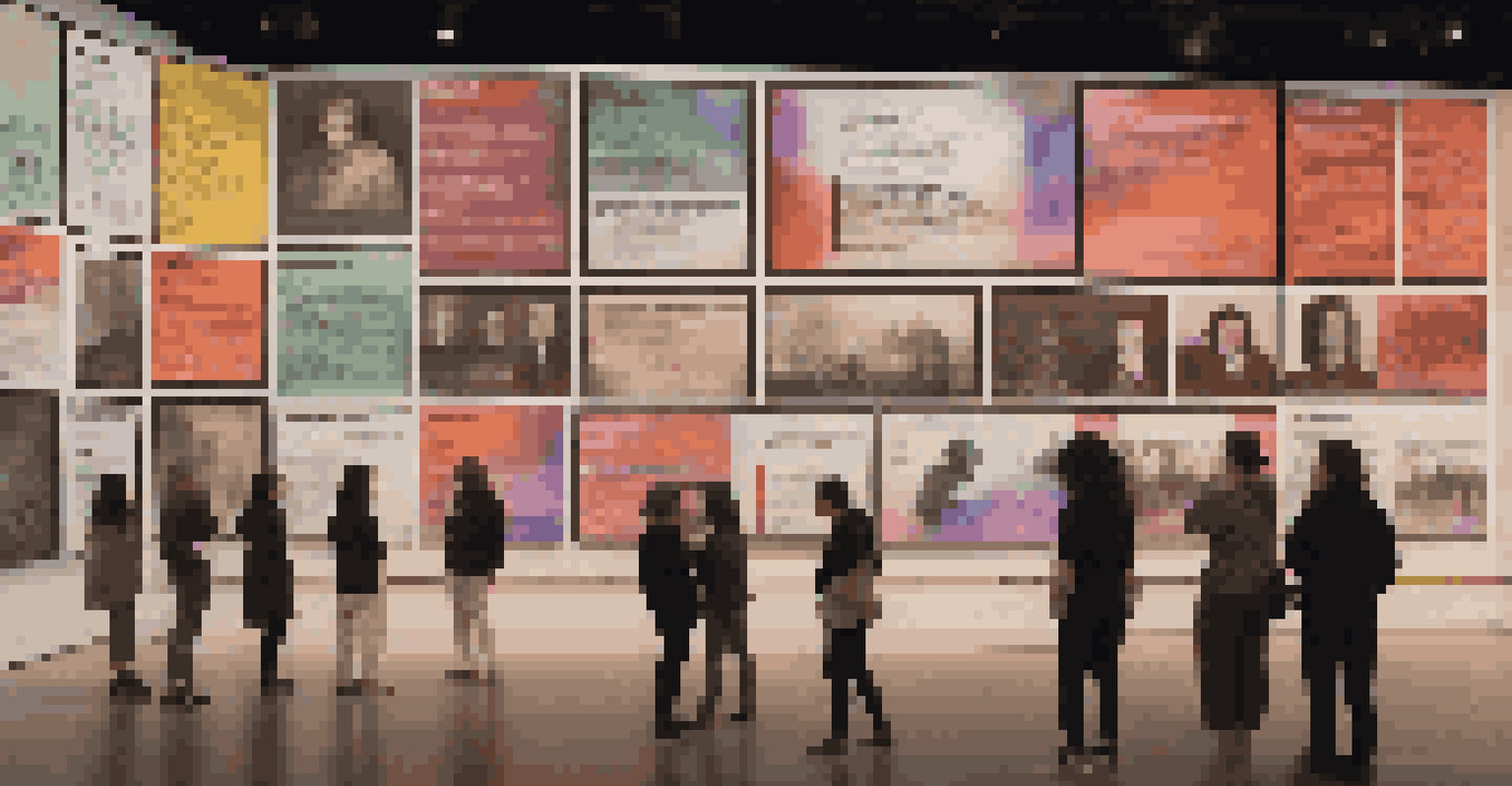The Intersection of Art and Politics: A Historical Overview

Defining the Connection Between Art and Politics
Art and politics have long been intertwined, influencing each other in profound ways. At its core, art serves as a mirror to society, reflecting cultural values, beliefs, and the political climate. Whether through paintings, literature, or performances, artists have often captured the essence of political struggles and social movements, making their work a powerful tool for communication and change.
Art is not a mirror held up to reality, but a hammer with which to shape it.
Consider the works of artists like Picasso, whose painting 'Guernica' vividly depicts the horrors of war and the impact of political turmoil. Such pieces not only evoke emotional responses but also provoke thought about the political issues at hand. This intersection allows artists to express dissent, advocate for change, and inspire collective action.
As we delve deeper into history, we see that this relationship is not new. From the propaganda of ancient civilizations to modern street art, the synergy between art and politics has evolved, yet its fundamental purpose remains: to challenge the status quo and encourage dialogue.
Historical Examples of Art Influencing Politics
Throughout history, numerous artists have used their platforms to influence political movements and social change. One notable example is the Harlem Renaissance, where African American artists used their work to challenge racial stereotypes and advocate for civil rights. This period saw a flourishing of music, literature, and visual arts that celebrated Black culture while confronting systemic racism.

Similarly, the Mexican Muralist movement, led by artists like Diego Rivera, employed large-scale murals to communicate messages about social justice and the struggles of the working class. These murals not only beautified public spaces but also served as a form of political commentary, making art accessible to all.
Art Reflects and Influences Society
Art serves as a mirror to society, capturing cultural values and the political climate while inspiring dialogue and change.
These historical instances illustrate how art can be a catalyst for political awareness and action. By providing a voice to the marginalized, artists have historically played a crucial role in shaping public opinion and mobilizing communities.
Political Art as a Form of Protest
Political art often emerges in response to social injustices, acting as a form of protest against oppressive systems. From the feminist art movement of the 1970s to contemporary pieces addressing climate change, artists have harnessed their creativity to challenge power structures. This art becomes a vehicle for activists, allowing them to amplify their messages and reach wider audiences.
The role of the artist is to make the revolution irresistible.
Take, for instance, the iconic 'We Can Do It!' poster created during World War II. Initially intended as propaganda, it evolved into a feminist symbol, representing women's strength and their essential role in the workforce. Such transformations highlight how art can transcend its original purpose, resonating with different movements over time.
Through visual, performance, or digital art, protest movements continue to find innovative ways to convey their messages. By blending creativity with activism, artists can foster solidarity and inspire action in ways that traditional political discourse may fail to achieve.
The Role of Censorship in Political Art
Censorship has always posed a challenge for artists, particularly those whose work critiques government policies or societal norms. Throughout history, regimes have sought to suppress dissenting voices, often targeting art as a means of control. This creates a complex dynamic where artists must navigate the fine line between expression and repression.
For example, during the McCarthy era in the United States, many artists faced censorship for their political beliefs, leading to the loss of their work and livelihoods. In contrast, some artists found creative ways to express their dissent, utilizing symbolism and allegory to evade scrutiny while still delivering powerful messages.
History Shows Art's Political Power
Throughout history, artists have harnessed their work to influence political movements and advocate for social justice.
The struggle against censorship has not only galvanized artists but has also led to the emergence of underground art movements. These movements often thrive in oppressive environments, showcasing the resilience of creativity in the face of adversity.
Contemporary Issues: Art in the Age of Social Media
In today's digital age, social media has transformed the landscape of political art, allowing artists to reach global audiences instantly. Platforms like Instagram and Twitter have become powerful tools for sharing political messages and mobilizing support. This democratization of art enables diverse voices to emerge, enriching the political dialogue.
Artists now create work that resonates with contemporary issues such as climate change, inequality, and human rights. Online campaigns often combine visual art with hashtags, creating viral movements that not only spread awareness but also foster community engagement. This intersection of art and technology has redefined how art can influence politics.
However, this new frontier also presents challenges. The rapid dissemination of information can lead to oversaturation, where messages may lose their impact. Artists must find innovative ways to cut through the noise while still conveying their critical messages effectively.
Art as a Reflection of Political Change
Art has the unique ability to document and reflect political change over time. As societies evolve, so too does the art that emerges from them, capturing the zeitgeist of the era. From the optimism of post-war art movements to the raw expression of contemporary struggles, artists chronicle the journey of humanity through their work.
Consider the art that emerged during the Arab Spring, which utilized graffiti and street art to express the population's desire for change. These powerful images became symbols of resistance, highlighting the role art plays in documenting pivotal moments in history.
Digital Age Transforms Political Art
Social media has revolutionized how art is shared and consumed, enabling artists to address contemporary issues and mobilize support globally.
This reflection not only preserves history but also inspires future generations to continue the conversation. By engaging with past artworks, we can better understand the political landscape and recognize the ongoing relevance of art in social discourse.
The Future of Art and Politics: What's Next?
Looking ahead, the intersection of art and politics is poised to evolve even further. As global challenges intensify, artists will likely continue to play a vital role in advocating for change and sparking dialogue. The rise of technology and new mediums will provide fresh avenues for expression, enabling artists to engage with audiences in innovative ways.
Moreover, as the world becomes more interconnected, we may witness a fusion of global artistic movements that transcend borders. This could lead to collaborative projects that address universal issues, fostering a sense of solidarity among diverse communities.

Ultimately, the relationship between art and politics will remain dynamic and multifaceted. As long as there are injustices to address and stories to tell, artists will find ways to weave their creativity into the fabric of political discourse.